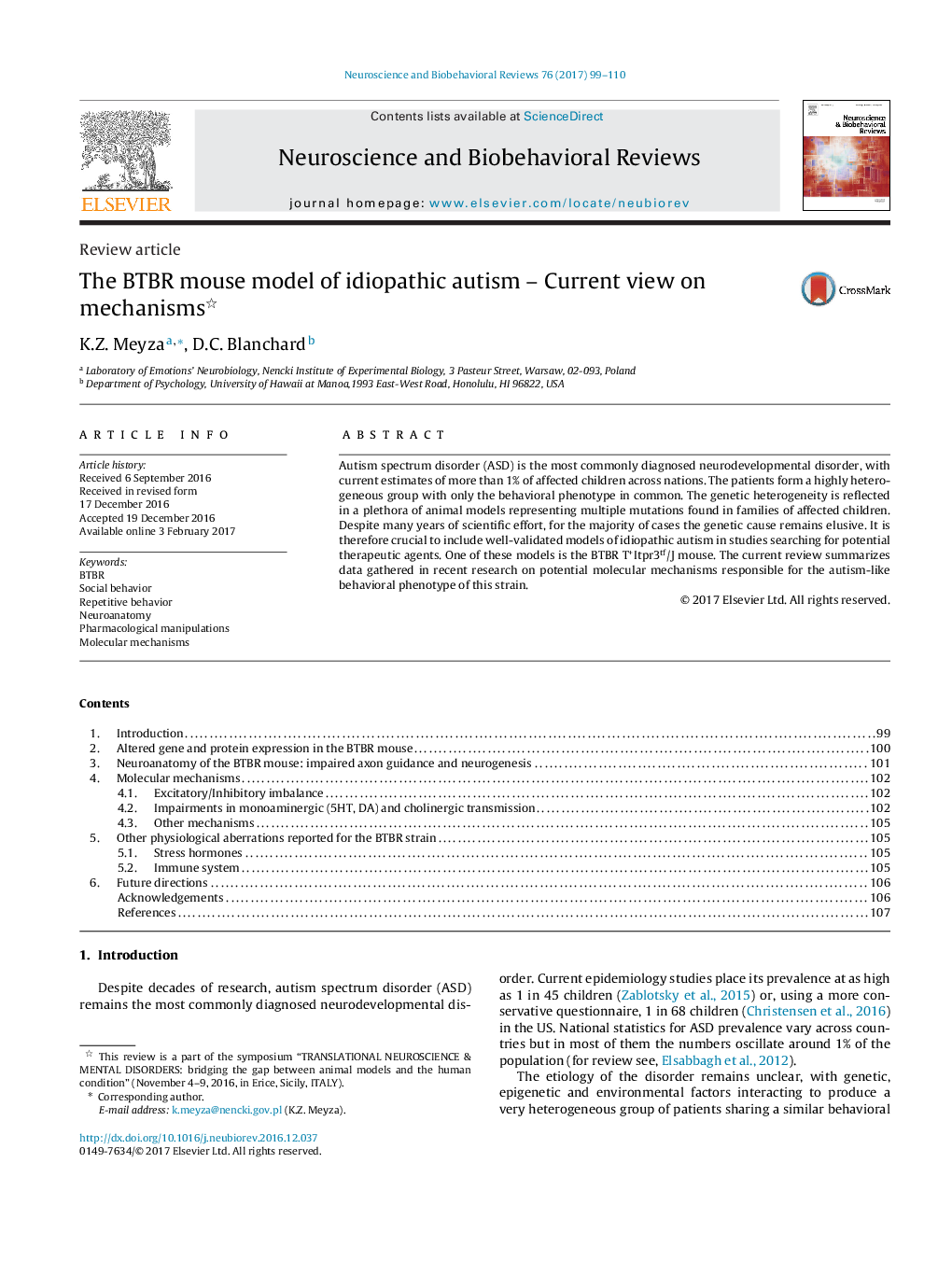| Article ID | Journal | Published Year | Pages | File Type |
|---|---|---|---|---|
| 5043672 | Neuroscience & Biobehavioral Reviews | 2017 | 12 Pages |
â¢BTBR mice display autism-relevant behaviors.â¢Several manipulations ameliorate their social impairments and/or the excess of repetitive behaviors.â¢Multiple signaling pathways are affected.â¢BTBR mice share neuroanatomical features with a subgroup of ASD patients.
Autism spectrum disorder (ASD) is the most commonly diagnosed neurodevelopmental disorder, with current estimates of more than 1% of affected children across nations. The patients form a highly heterogeneous group with only the behavioral phenotype in common. The genetic heterogeneity is reflected in a plethora of animal models representing multiple mutations found in families of affected children. Despite many years of scientific effort, for the majority of cases the genetic cause remains elusive. It is therefore crucial to include well-validated models of idiopathic autism in studies searching for potential therapeutic agents. One of these models is the BTBR T+Itpr3tf/J mouse. The current review summarizes data gathered in recent research on potential molecular mechanisms responsible for the autism-like behavioral phenotype of this strain.
